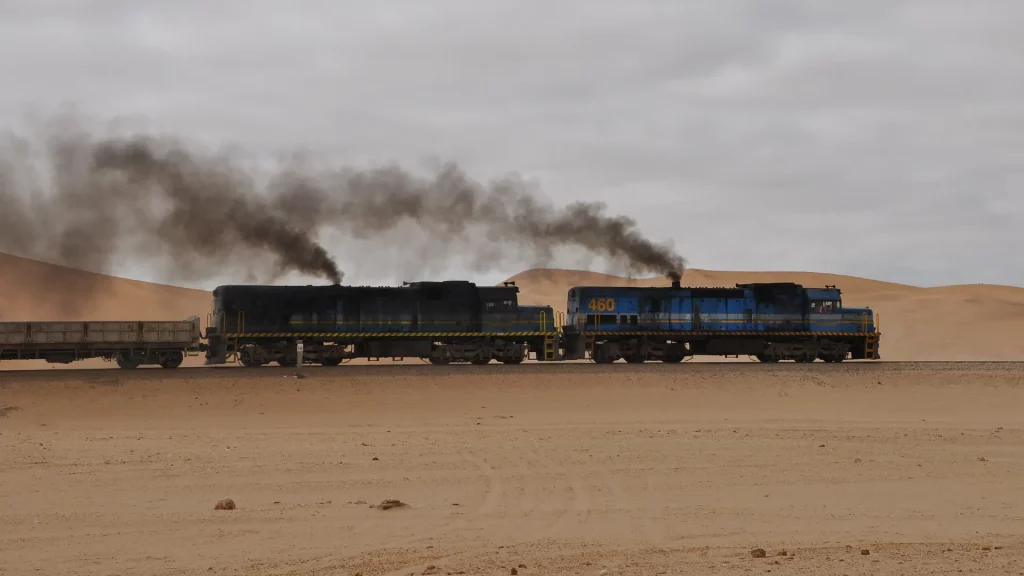Iran and Iraq have officially announced that the Shalamcheh-Basra railroad project linking both nations, which has been stuck since 2014, has now begun its construction work. After its successful completion, it would be a huge relief for the Iranian pilgrims to visit the holy sites in Iraq.
Mohammad Mokhber, Iran’s First Vice President, and Mohammed Shia al-Sudani, Iraq’s Prime Minister, marked the commencement of construction work on the railroad project to be built alongside their borders last week.
Shalamcheh-Basra railroad
This railroad will join Shalamcheh, the border town of Iran, with Basra, the southeastern city of Iraq. It is a 32 km (20 miles) long railroad which is expected to be completed in the next 18 to 24 months.
Both countries had first discussed this agreement to develop connectivity via railways back in 2014, but it was paused after a short time due to ISIL (ISIS) group’s violent, offensive activities all across Iraq.
In the winter of 2021, when Iraq’s political stability and security situation improved, it came forward to restart the project, which had almost negligible progress over several years. But, the work went on slowly with missing deadlines for the past two years.
The Iraqi Transport Minister Razzaq Al-Saadwi visited Tehran and met his counterpart, Mehrdad Bazrpash, in April this year. The construction of the railroad was a major agenda of their talks. The meeting ended with the signing of an agreement, which so far looks the most promising in terms of completion of the project.
The project is planned to be built on an overpass on the waterway which separates the two countries. The waterway in Iran is called Arvand and Shatt al-Arab in Iraq. The bridge is said to be moveable because it is a passage for ships as well.
Challenges ahead
The waterway will have to be dredged to make it accessible for the ships as well as the movable bridge above. The waterway was last dredged before the 1979 revolution; that’s several decades of sediment deposits on the riverbed.
Another dangerous challenge happens to be mine. On the Iraq side, they haven’t begun construction of railway tracks near its border, which is heavily infested with mines. While on the Iranian side, they have achieved substantial success in removing mines and setting up tracks. These mines were planted back in the 1980s during the Iran-Iraq war when Saddam Hussein invaded Iran and started a war that lasted 8 years.
The Iranian media has been playing a big role in this project. They have been anticipating that Iraq might be slowing down the development of the railroad under the influence of the United States. They also raised speculation that the Iranian officials might be favouring the Development Road project with Turkey over Shalamcheh-Basra.
Geopolitical importance
Under the guidance of President Ebrahim Raisi, Tehran is working on several projects for railway development as it eyes on expanding its domestic network for enhanced regional integration. The rail project between Iraq and Iran is likely to benefit Tehran more as it looks forward to integrating its rail networks to establish itself as a regional power.
The Shalamcheh-Basra railroad will connect Iran Iran to Najaf and Karbala in Iraq, both of which happen to be major hubs for the transportation of millions of pilgrims who visit Iran for the Muslim holy sites.
This project will economically benefit Iran, which is under the clutches of numerous sanctions from the United States after the White House unilaterally withdrew itself from the Iranian nuclear deal in 2018. The railway will enhance its transportation capabilities, which will boost trade and help the Islamic nation to develop itself as a major centre for transportation lines. Iran is also working on the International North-South Transport Corridor, a multi-modal transport network connecting India to Central Asia and Russia via Iran.
